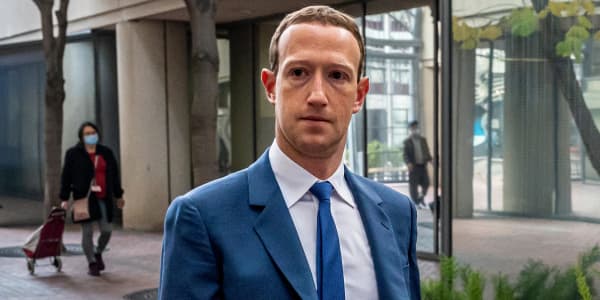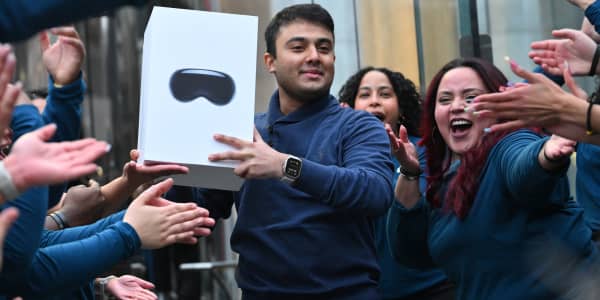To watch the highly anticipated first presidential debate of 2016, you can turn on your TV — or you can go to Facebook, Twitter and YouTube, which have all brokered deals to livestream Hillary Clinton and Donald Trump's showdown on Sept. 26.
Social media companies have been encouraging their users to tune in or go "live." But while livestreaming potentially opens the gates for younger audiences and different kinds of content, it's still posing a challenge for companies trying to adopt the new form.
"When anyone can be broadcasting at any time from anywhere, you're given endless creative opportunities for brands and for others, but it becomes a real creative challenge on how to do it right," said Erick Brownstein, partner and chief strategy officer of digital marketing company Shareability. "It's really an extension of the whole smartphone revolution."
Twitter launched its livestreaming app Periscope in March 2015. It has recently bolstered its livestreaming efforts by signing a deal with the NFL this season to stream Thursday Night Football games on its platform, which reached 2.1 million viewers in the first week. The platform has announced plans to livestream two shows in partnership with the NBA.
Meanwhile, Facebook expanded its livestreaming feature to its users in April. It's streamed pre-Olympics basketball games in partnership with the NBA, as well as a Premiere League soccer match in August. YouTube has offered livestreaming for years, and began rolling out its mobile livestreaming capabilities in June.
"People have become a culture of 'right now,'" said Kevin Del Rosario, associate director of social media for advertising agency Huge. "We want our questions answered right now. We want to know and see what people are doing right now. Technology just like Twitter has helped us get news quicker. We're getting what's happening quicker, literally in the moment, live."
Younger digital stars especially are adopting the medium, said Steven Benanav, vice president of content partnerships for Univision. As they grow up on it, he believes they'll incorporate it into their social media and make it part of the culture. Benanav said it also helps that the algorithms for Facebook and Twitter seem to prioritize live videos in users' feeds over static written posts or uploaded videos, giving free promotion.
"For [influencers], what's so important is having that direct connection to the audience, and livestreaming is the shortest line to get there," Benanav said.
It offers an opportunity to reach younger viewers for companies, said Ted Leonsis, CEO of Monumental Sports & Entertainment, which is the majority owner of the Washington Capitals, Washington Wizards and Washington Mystics among other professional teams. Leonsis was also the former chairman of AOL.
Leonsis noticed a big disconnect in video consumption habits between his two children. When his older son went to college, he wanted a TV to connect to his dorm's cable system and play his Xbox. By the time his daughter moved into her dorm a few years later, she didn't want a TV. She just wanted an iPad to stream her shows. After both graduated, his son bought a big screen TV for his house. His daughter is wired but doesn't have a cable subscription.
"The only way you can buy a ticket to the Washington Capitals is through StubHub, and it's really priced out of the pocketbook of the young person just starting their career," Leonsis said. "If they don't have cable, and they can't watch my games, how do I make that person a fan?"
Still, the social media livestreaming audience is too small and doesn't provide the high-quality experiences and production value that we see on TV, Leonsis said.
"Periscope came and went, and Vines are looked at as being small promotional vehicles, but none of those are underpinning the birth of a new platform that would replace cable or satellite-delivered service," Leonsis said.
Livestreaming is also such a different medium from other forms of online video. While Shareability has a process that helps determine which topics are most likely to make a "viral" video for brands, and a social media strategy to help promote those clips, it relies on days of social media chatter to help get the video seen.
"Creating shareable content is what we consider to be the holy grail of advertising," Brownstein said. "If you can get someone not only to watch your content and share it, and become an advocate of our brand, you've achieved something very special."
It's different when it comes to livestreaming, he points out.
"You've got to take a look at it now," Brownstein said. "It's got to be so compelling that it triggers an action like that. Then there's the sharing of the content after the fact. After the livestream has been recorded, is it going to be shareable?"
In addition, it can be hard to predict what will do well on a livestream. While events like sports, awards shows or debates still draw an audience whether it's on TV or online, viewers are more unpredictable when it comes to brand, media company or personality-led livestreams. Some of the most notable Facebook Lives — Chewbacca Mom, BuzzFeed's exploding watermelon, the man climbing the Trump Tower in New York —are seemingly random events.
"It's still about figuring out what's going to be the idea that's going to get a lot of shares," Univision's Benanav said. "We're in such early days, and we're all trying to understand it."
In order to pick topics that will do well, clients of advertising agency Huge rely on how other social media posts performed. For example, if a picture of a warehouse got a lot of likes on Facebook, the company may consider doing a livestreamed factory tour. Last Oscars, Huge worked with Kohl's to Periscope behind the scenes of the Oscars during commercial breaks, giving a second-screen experience.
Brands that are jumping on livestreaming are seeing it as a way to build a relationship with their consumers rather than create a highly produced piece of content, Huge's Del Rosario said. It's more about giving behind-the-scenes access, and giving consumers insight into the brand.
"It's only going to get bigger in terms of seeing what's happening and people wanting transparency from brands on social media," he said. "Now we want to know intimate details: how it is made, where it comes from, whose hands are making it. Features like live video give us the opportunity to amplify that."





